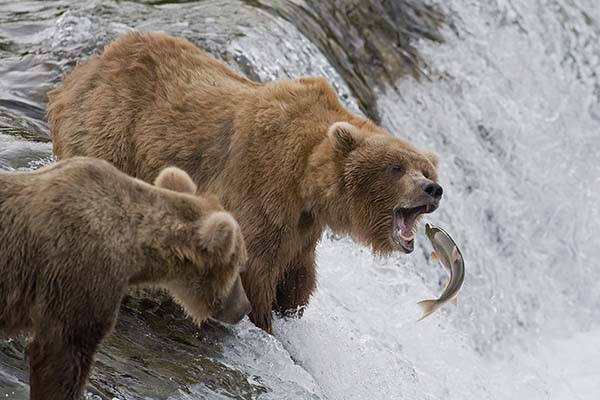


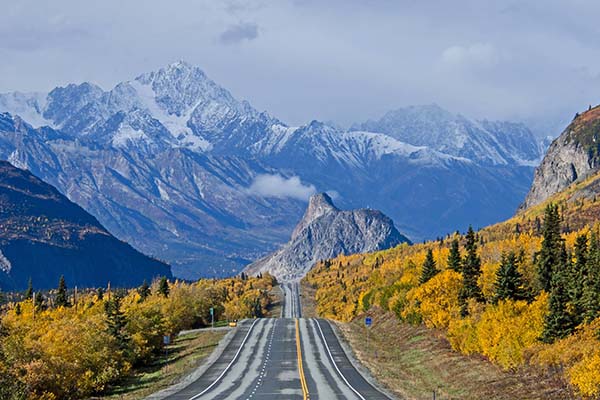
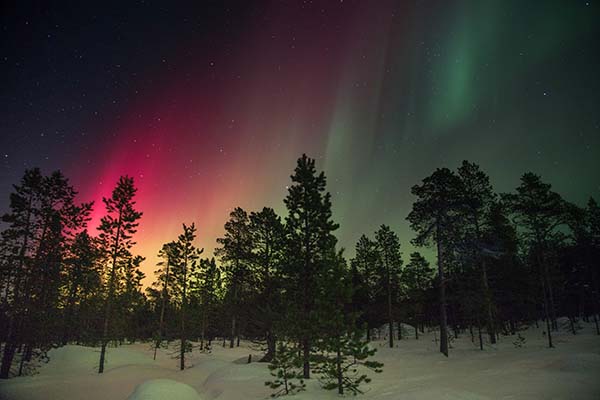
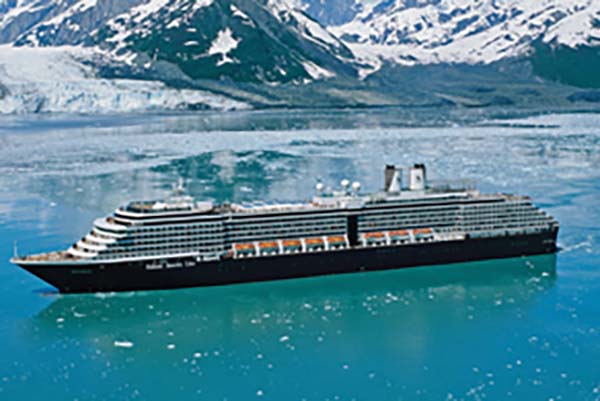
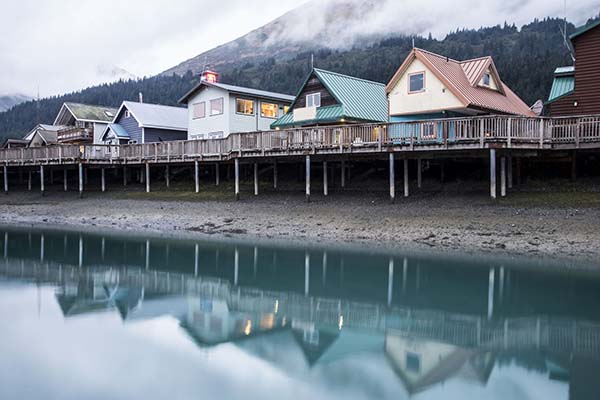

Alaska is the largest, and yet most sparsely populated state in the U.S., located northwest of Canada surrounded largely by the Pacific Ocean. The 49th state is rich with awe-inspiring scenery and preserved wildlife, with prolific fishing and oil industry. Home of the continent’s highest peak, Mt. Denali is so massive you can see it showing off a snow dress year round from several cities away. The region is immersed with Native art culture including totem carving, blanket toss, dancing, music, and more. It’s a place where you can see bears catching their fish dinner from a waterfall, cheer for famous dog mushers in a sled race, and dress up as a miner for the “Fur Rondy” celebration. From the ice glaciers to evergreen forests and bald eagles, Alaska is a rare icon for North America.
Did You Know?
- Aurora Borealis, otherwise known as the northern lights, can be seen an average of 243 days a year in Fairbanks, Alaska.
- Alaska is less than 50 miles from Russia.
- It is prohibited to wake a sleeping bear in Alaska, in order to take a photograph (although it is legal to shoot bears there!).
- It’s also illegal to give a moose a beer in Alaska.
- Alaska broke their record high temperature at 100F in Fort Yukon in 1915, and the lowest temperature recorded was -80F at Prospect Creek Camp in 1971.
- 25 percent of the oil produced in the United States is from Alaska.
- Dog mushing is the state sport.
- Alaska has more coastline than the other 49 states combined.
- Because of their long summer days, Alaska has grown some extremely oversized produce, including a 35 pound broccoli, a 65 pound cantaloupe, and a 138 pound cabbage.
- 17 of the 20 USA’s highest peaks are in Alaska, including Denali, the highest peak in North America (which is 20,320 ft. above sea level).
- Every year there are about 5,000 earthquakes in Alaska, and 1,000 of them that measure above 3.5 on the Richter scale – including three of the ten strongest earthquakes ever recorded in the world.
Travel Tips
US citizens do not need a passport to travel to Alaska, as long as you have proper government-issued ID and your birth certificate. However, new restrictions at some state airports are requiring you to have a passport to travel, so it’s best to have a valid passport if possible. If you’re passing through Canada on your route to Hawaii, you’ll also need to present your passport. And, if you’re a citizen from another country, you will need a passport. You’ll also need a visa, unless your country is included in the Visa Waiver Program and travelling less than 90 days. Canadian citizens may also present a NEXUS card instead of a passport, if they are enrolled in the traveler program.
It’s not surprising that people assume Alaska is always cool, but they actually do enjoy warm temperatures in the summer months, especially in the interior region, ranging from 60-90F. Late August and September do start to see cooler temperatures as fall arrives early and they get fewer hours of sunlight. The winter is cool, however, and the average temperature for Fairbanks in the month of January is -1 degree Fahrenheit. It’s recommended that you dress in layers, being prepared for shedding top layers in the middle of the day.
Alaska’s currency is the US dollar. Although near Canada, they generally do not accept the Canadian dollar, so it’s best to bring your credit and debit cards, accepted in most establishments. ATM machines are also easily found. Traveler’s Cheques are widely accepted by banks there, but are rarely necessary if travelling from the U.S. British travelers should note that Sterling Travelers Checks are not accepted in Alaska.
Cell phone coverage can be a challenge in some of the remote areas of Alaska that are out in wilderness or not as populated. Check with your wireless carrier before you leave to see what your options are. The local provider GCI (www.gci.com) gets good coverage across the state in the populated areas, so you may want to arrange for a temporary plan with them if you need more reliable communication. In the larger cities, there’s plenty of wi-fi available at hotels, coffee shops, and libraries, although you may have more difficulty in remote areas or lodges.
Flightseeing is popular in Alaska, with many different carriers providing tours to see glaciers and the wilderness by air. Because there’s so much water and fishing surrounding the state, there’s plenty of travel by boat, ferry, and seaplane as well. Road travel on Alaska’s scenic byways is also popular, especially amongst motorcycle enthusiasts Many of the popular parks are primarily accessed by the highway, including Denali National Park and Kenai National Wildlife Refuge, so renting a car or RV allows you the freedom to see The Last Frontier on your own. They also have plenty of bus tours, and some incredible train routes with glass domed cars that offer 180 degrees of scenery!